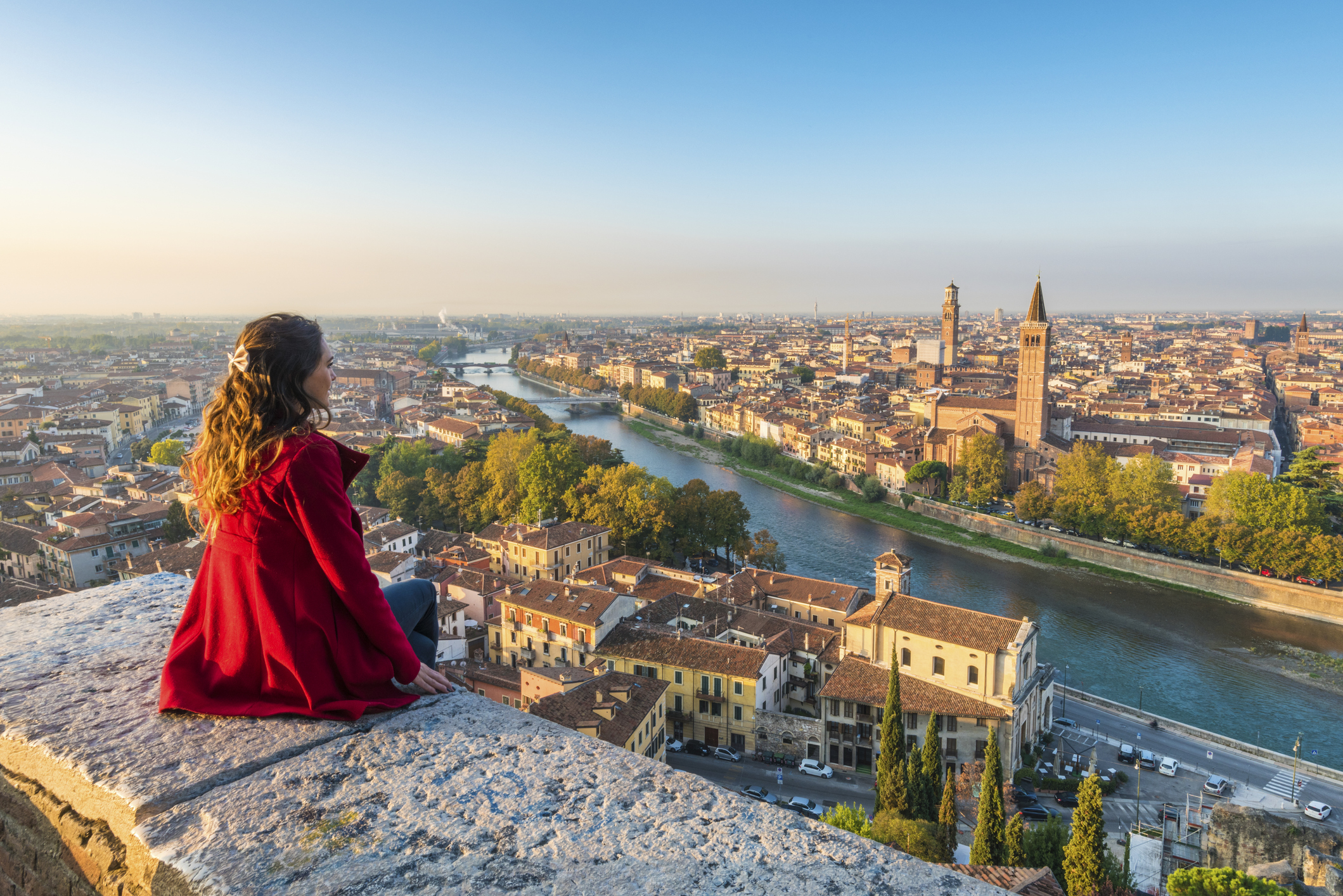Watch this related video:
Are you dreaming of a retirement filled with sun-kissed villas and rich culture? Look no further than Italy. With its warm climate, vibrant heritage, and inviting lifestyle, Italy is a top destination for US retirees. But before you pack your bags, make sure to plan ahead and consider the unique advantages and challenges of retiring in this beautiful Mediterranean country.
The Temptation of “Viva Italia”
From sipping morning espressos at local cafes to strolling through charming piazzas, Italy offers retirees a unique way of life. According to Paul Stewart, founder of MyBaggage, a luggage shipping company, his sabbatical in Tuscany allowed him to experience the Italian lifestyle firsthand. And he’s not the only one enticed by this beloved destination. Italy consistently ranks in the top 10 of US retiree destinations, thanks to its rich cuisine, unhurried pace, and adventurous spirit.
Federica Grazi, founder of Mitos Relocation Solutions, notes that Italy is a diverse country that has something for every taste. Whether you’re a nature lover, a history buff, or a foodie, Italy has it all. From skiing in the Alps to soaking up the Mediterranean sun, exploring 2,000 years of history, and indulging in over 300 types of pasta, the possibilities are endless in “Bel Paesi” (beautiful country).
Early Planning is Key
While the allure of a new life abroad is exciting, it’s crucial to plan your move carefully. As an American citizen, you’ll need to qualify for a residence permit to live in Italy. Federica Grazi emphasizes the importance of understanding your immigration options, as well as other critical aspects such as taxation, healthcare, customs, and banking. Working with local retirement and relocation professionals can make the process smoother and more manageable.
Navigating Visa Requirements
One of the most significant challenges of retiring in a foreign country is navigating visa requirements. For US retirees, the Elective Residency Visa (ERV) is the most common option. This visa requires proof of passive income, health insurance valid in Italy, and proof of accommodation. However, it does not allow for any form of employment, which can be limiting for couples where one spouse may still be working.
An alternative to the ERV is the Investor Visa, which permits business activities and offers the benefit of a 7% flat tax regime on worldwide income for high-net-worth individuals. Additionally, there is a Work Visa for US adults employed in Italy, and a Digital Nomad Visa is set to launch soon for those who wish to work remotely while living in Italy.
Cost of Living Considerations
The cost of living in Italy varies regionally, with the North being generally more expensive than the South. In cities like Milan, the cost of renting a two-bedroom flat can go for around $2,000 a month, while dining out at a mid-range restaurant can set you back $50 per person. However, in smaller towns and less touristy areas, the cost of living can be significantly lower.
To live comfortably in Italy, you can expect to spend around $15-to-$30 per person for a decent meal, $125 per month on utilities, and $75 per week on groceries for two people. Keep in mind that your money will go much further in the South, making it a more affordable option for retirees on a budget.
Prioritizing Healthcare
The quality of medical care in Italy is generally excellent, especially in the Northern regions. Many doctors speak English, and the cost of medical care is highly affordable for legal residents through the Servizio Sanitario Nazionale (SSN) national healthcare service. Private international coverage is also an option for an additional cost.
It’s recommended for new expats to get private healthcare while waiting for residency paperwork to clear. It’s worth noting that Italy has a forced heirship law, so it’s essential to consult with local counsel to ensure that your estate plan aligns with Italian succession law.
Tax Benefits for Retirees
Italy offers generous tax advantages for retirees, such as the “flat tax” program, which only taxes qualified newcomers at a minimal 7% on income earned abroad for the first 10 years. The US-Italy tax treaty also eliminates double taxation. However, US citizens must still file taxes as a citizen, but they can get tax relief through Foreign Earned Income Exclusion and Foreign Tax Credits.
It’s advisable for US citizens with trusts as part of their estate plan to consult with local counsel in Italy to ensure tax efficiency. It’s essential to do this before obtaining Italian tax residence to avoid limiting your planning and restructuring options.
Choosing Your Retirement Destination in Italy
Italy offers a diverse range of living options for retirees, from historic cities like Florence and Sicily to coastal towns like Puglia and the tranquility of the Italian Lakes region. Your ideal destination will depend on your preferences and lifestyle goals. For example, Florence is a great choice for culture and history lovers, while Sicily offers affordability and eligibility for the 7% flat tax regime.
Be Prepared for Bureaucracy
Italy is infamous for its bureaucratic processes, which can be frustrating for retirees used to faster paperwork timeframes. Some essential things to keep in mind include obtaining a tax code, registering your residency, and setting up an Italian bank account. Taking Italian classes and joining established expat groups can also help ease the transition.
Learn the Language
While it’s not a requirement, learning basic Italian can make your life much more comfortable in Italy. It shows respect and can help you integrate into the local community. Plus, it will make everyday tasks like shopping and communicating with locals a lot easier.
Traveling to and from Italy
Many good nonstop flights from the U.S. to major Italian cities run regular routes.
“Major US cities, including New York, Miami, Los Angeles, and Boston, have direct flights into Rome, Milan, and Venice,” Garrido noted. “This also makes it simple for retirees to see family in the U.S. or host visitors without complicated travel logistics.”
These flights are growing as Italy attracts more visitors in a post-COVID world.
“Delta Air Lines will launch daily year-round nonstop flights from New York (JFK) to Sicily starting May 22, 2025 — the first direct connection between the US and Sicily,” Swindells added. “New seasonal flights from Atlanta and Chicago to Naples start in May 2025, in addition to existing service from New York.”
In-country transport is highly available as well.
“Italy’s railway network is very well developed, especially in the North and Centre, so it’s easy to reach these international airports by public transport or connecting flights,” Grazi said.
The final word on retiring in Italy
Life is just different in Italy — it moves at a more languid pace. Retirees will learn to take the extra time to soak up the surroundings and consider the rich history of one of the most popular destinations in the world.
“The appeal to U.S. retirees moving to Italy is often because of the history, relaxed lifestyle, and amazing cuisine,” said Ben Loughery, founder of the financial advisory firm Lock Wealth Management in Atlanta, Ga. “I studied abroad in Rome, and what I loved about my time there was the country’s diverse landscape, whether we were in Venice one weekend or Capri the next.”
Being prepared is the key to getting to and building a lifestyle retirement experience.
“Moving to Italy involves several challenges, such as securing a retirement visa, language barriers, healthcare planning, foreign banking, and cultural adjustment,” Stewart said. “Preparation involves a systematic approach: begin Italian classes at least one year beforehand, visit Italy at various times of the year, join established expat groups on the Internet, and take advice from financial experts familiar with Italy and the US economic systems.”

